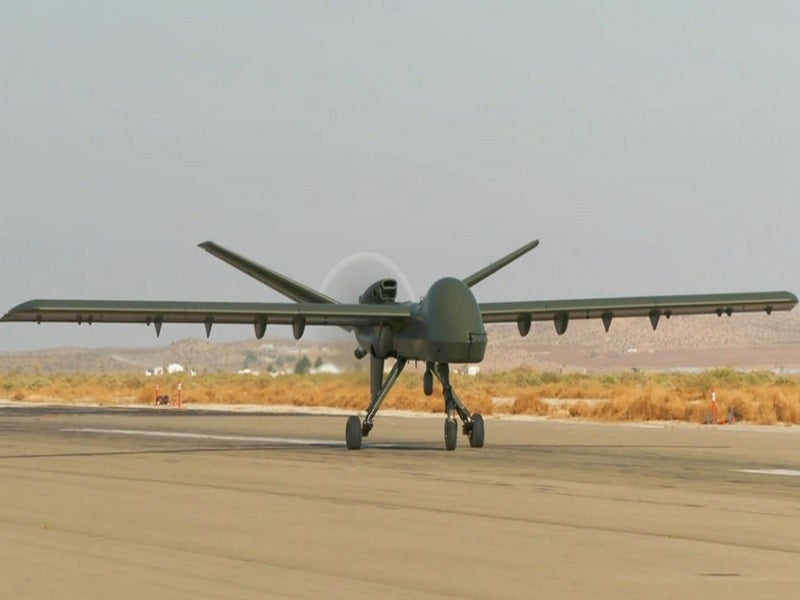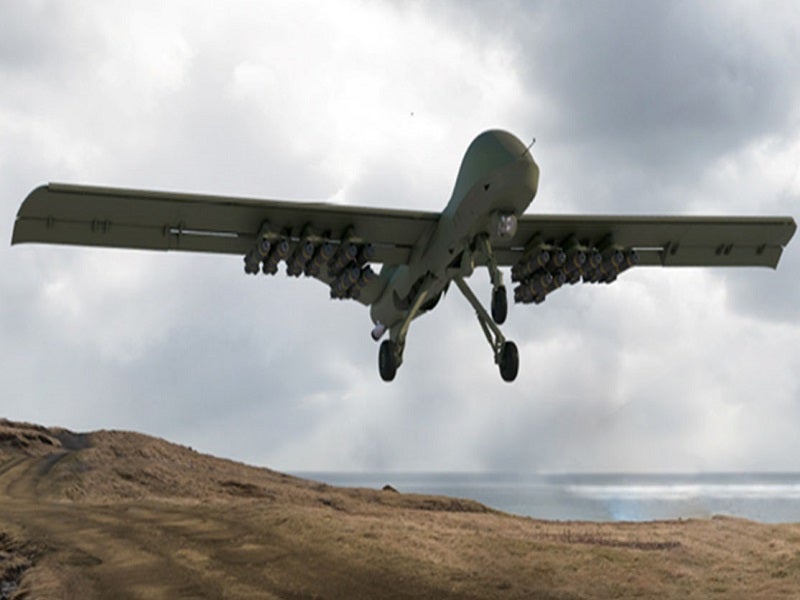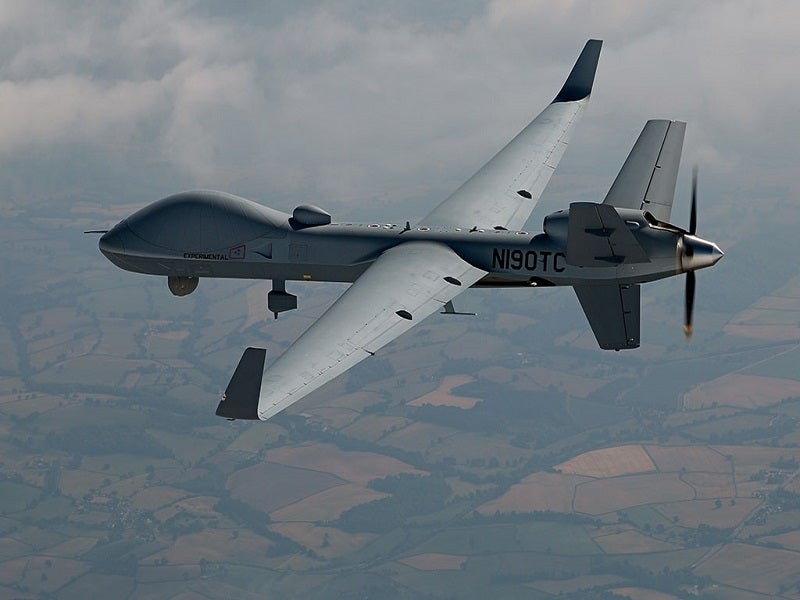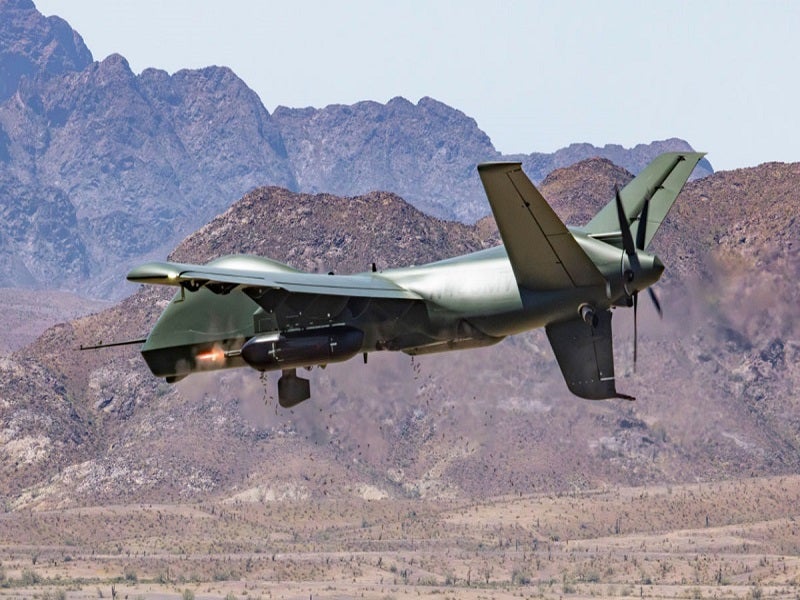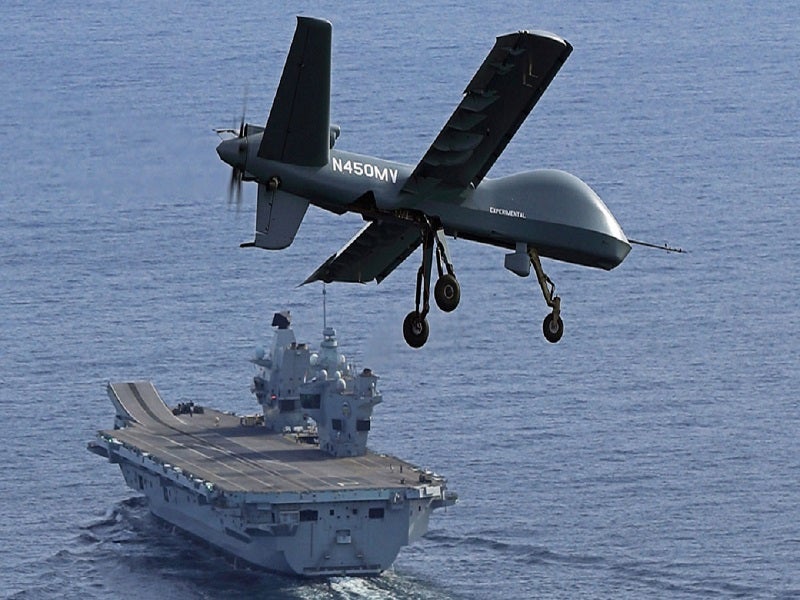Mojave is a short take-off and landing (STOL) uncrewed aerial system (UAS) designed and developed by General Atomics Aeronautical Systems (GA-ASI), a manufacturer of remotely piloted aircraft (RPA) and radar systems. It can provide enhanced ammunition capabilities and firepower.
The UAS is the latest aircraft in GA-ASI’s Predator series of RPAs. The Predator series is known for intelligence, surveillance, and reconnaissance (ISR) capabilities, as well as kinetic and non-kinetic fire support overmatch.
In April 2024, GA-ASI announced that the Mojave UAS successfully destroyed stationary targets in live-fire tests, proving its effectiveness on the battlefield.
Mojave UAS development timeline
GA-ASI initiated the development of an STOL in 2017 under its Mojave initiative.
The prototype of the uncrewed platform underwent flight tests for the first time in 2021. Mojave was officially announced by the company in December 2021.
IGA-ASI concluded multiple take-offs and landings with the Mojave UAS on a dirt strip near El Mirage, California, in August 2023. Take-offs happened in just 586ft and landings in as little as 335ft. The main goal of the tests was to collect terrain data with Mojave, rather than aiming for the shortest distances possible.
Mojave UAS’s capability to take off and land from unprepared landing sites over short distances along with its ability to operate from aircraft carriers was demonstrated in November 2023.
GA-ASI performed a first-of-its-kind demonstration of its STOL capability on the Royal Navy aircraft carrier HMS Prince of Wales utilising the Mojave. The live-fire demonstration occurred at Yuma Proving Ground in Arizona.
GA-ASI teamed up with Dillon Aero, a US-based armament manufacturer, to attach two of the latter’s DAP-6 Gun Pod Systems to the Mojave aircraft in April 2024. Each pod has a six-barrel M134D-H rotary machine gun that can shoot 3,000 rounds per minute.
GA-ASI conducted a live-fire demonstration, during which Mojave completed seven passes across two flights firing 10,000 rounds of ammunition at various targets.
The tests confirmed Mojave’s ability to undertake various new missions following a relatively brief and straightforward period of engineering integration. It also confirmed that the aircraft’s remote pilots can conduct attacks at low altitudes.
Mojave UAS design and features
The Mojave UAS has a reduced footprint and large wings that provide room for high-lift devices. It can support forward-basing operations as it does not require a traditional paved runway.
It can take off from and land on remote semi-improved surfaces. The aircraft is designed to provide similar endurance and persistence as traditional crewed aircraft.
The aircraft has a payload carrying capacity of 3,600lb (1,633kg). It has an overall length of 29ft (9m), a wingspan of 52ft (16m), and a maximum gross take-off weight of 7,000lb (3,175kg).
The avionics and flight control systems of Mojave are based on the systems of the MQ-9 Reaper and MQ-1C Gray Eagle-ER.
Mission capabilities of Mojave UAS
The Mojave UAS is designed to conduct long-endurance armed overwatch, armed reconnaissance, and attack missions. It can provide armed support to the forces on the ground.
The quick weapons reload capability allows the aircraft to support the ground forces, even from austere sites located near the battleground. The aircraft can support multi-domain operations (MDO).
Communication systems of the Mojave UAS
The aircraft is equipped with a global positioning system (GPS) and a satellite communication (SATCOM) datalink with anti-jam technologies to mitigate interference and jamming threats.
The advanced datalink provides line-of-sight (LOS) and beyond LOS (BLOS) capabilities.
Command and control capabilities of Mojave UAS
The Mojave UAS can be controlled from take-off until landing using a traditional ground control system managed by a single pilot. Additionally, a laptop-based interface known as the scalable command and control (SC2) system, is planned for operating the UAS.
GA-ASI has been testing the SC2 solution in partnership with the US Army. The SC2 requires limited hardware and provides the functionalities of a conventional ground control station from the comfort of a laptop. It reduces the workload of the UAS operator using automated checklists.
Weapon and sensor payloads carried on Mojave UAS
The aircraft’s open architecture design enables flexible integration of payloads. The UAS has seven hardpoints, including six underwing points and a centreline one, to carry weapon systems.
The weapon stations on the wings feature four hardpoints, each capable of carrying up to 650lb (294.83kg). Additionally, there are two more hardpoints, one on each wing, with a capacity of 350lb (158.75kg) each. The central hardpoint provides a payload carrying capacity of 500lb (226.79kg).
The Mojave UAS can carry up to 16 Lockheed Martin AGM-114 Hellfire air-to-surface missiles, or other missiles in a similar configuration.
It can be equipped with high-definition electro-optical/ infrared radar (EO/IR), signal intelligence (SIGINT), synthetic aperture radar (SAR), and ground moving target indicator (GMTI). These payloads make the aircraft suitable for both land and maritime missions.
Propulsion and performance
The powerhouse of the aircraft is a Rolls Royce M250 turboprop engine, which has a rated power of 450shp.
The UAS has a fuel capacity of 3,550lb (1,610kg). It is transportable by the C-130 military transport aircraft and takes 1.5 hours from roll out to take off with a team of four personnel. The flight time for the UAS with ISR payloads is eight hours and with 12 Hellfire weapon payloads is three hours.
The Mojave aircraft has a take-off distance of 400ft (122m) for ISR missions and 1,000ft (304m) for attack missions. It provides a maximum endurance of more than 25 hours. The unmanned system has a flying range of 2,500nm (4,630km) in a ferry configuration.
The ground support equipment of the UAS can be self-ferried or transported using a UH-60 Black Hawk utility helicopter.

